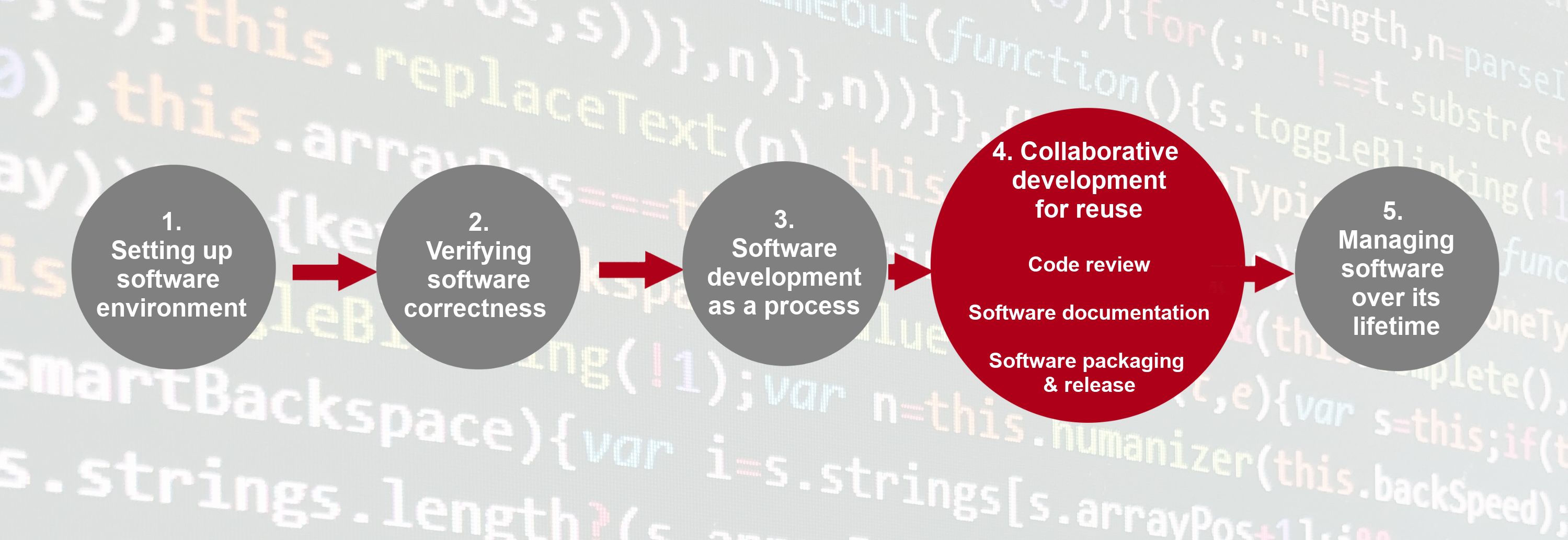Section 4: Collaborative Software Development for Reuse
Overview
Teaching: 5 min
Exercises: 0 minQuestions
What practices help us develop software collaboratively that will make it easier for us and others to further develop and reuse it?
Objectives
Understand the code review process and employ it to improve the quality of code.
Understand the process and best practices for preparing Python code for reuse by others.
When changes - particularly big changes - are made to a codebase, how can we as a team ensure that these changes are well considered and represent good solutions? And how can we increase the overall knowledge of a codebase across a team? Sometimes project goals and time pressures take precedence and producing maintainable, reusable code is not given the time it deserves. So, when a change or a new feature is needed - often the shortest route to making it work is taken as opposed to a more well thought-out solution. For this reason, it is important not to write the code alone and in isolation and use other team members verify each other’s code and measure our coding standards against. This process of having multiple team members comment on key code changes is called code review - this is one of the most important practices of collaborative software development that helps ensure the ‘good’ coding standards are achieved and maintained within a team, as well as increasing knowledge about the codebase across the team. We’ll thus look at the benefits of reviewing code, in particular, the value of this type of activity within a team, and how this can fit within various ways of team working. We’ll see how GitHub can support code review activities via pull requests, and how we can do these ourselves making use of best practices.
After that, we’ll look at some general principles of software maintainability and the benefits that writing maintainable code can give you. There will also be some practice at identifying problems with existing code, and some general, established practices you can apply when writing new code or to the code you’ve already written. We’ll also look at how we can package software for release and distribution, using Poetry to manage our Python dependencies and produce a code package we can use with a Python package indexing service to illustrate these principles.

Key Points
Agreeing on a set of best practices within a software development team will help to improve your software’s understandability, extensibility, testability, reusability and overall sustainability.